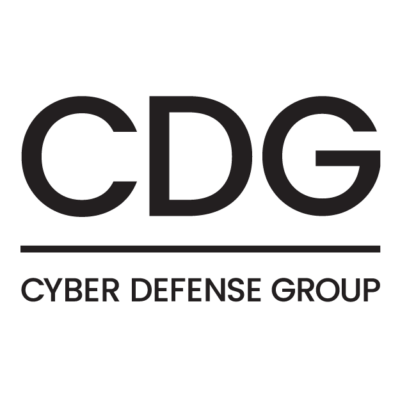DevSecOps: The Key to Smarter, Safer Software Development

DevSecOps is the amalgamation of security with DevOps – the culture, methodology, and practice of implementing and improving software/applications at faster rates and lower rates of failure. In a DevOps model, the development team and operations team work together to deliver applications to customers not only with faster turnaround times but also an infrastructure that allows for applications that are more durable, reliable, and open to refinement even after deployment.
Traditionally, separate teams work towards the development, operations, and security of an application, which can create friction between teams and sometimes lead to a less than efficient operating mode. Additionally, sometimes DevOps can stand at odds with the security team, as DevOps may want to release new versions of the application quickly while security is focused on reducing risk. Because of this tension, organizations have the incentive to change this dynamic and move towards DevSecOps.
What exactly is DevSecOps?
DevSecOps stands for “Development, Security, and Operations.” It is a software development approach that integrates security into the entire software development lifecycle, from design and development to testing, deployment, and operations. The DevSecOps approach emphasizes collaboration and communication between development teams, security teams, and operations teams, with shared responsibility for ensuring the security and reliability of the software being developed. According to AWS, DevSecOps “aims to help development teams address security issues efficiently.” By incorporating security into the software development process from the beginning, DevSecOps can help prevent security issues and vulnerabilities from being introduced into the software and to enable faster and more secure delivery of software products, with the ultimate goal of secure software that can withstand potential threats and increase the overall uptime of an application.
DevSecOps best practices

If you’re looking to implement DevSecOps into your organization, some best practices to consider are:
Shifting left security
Shifting left security and incorporating security practices into the development process from the beginning is crucial.
Collaboration and communication
Collaboration and communication with development, security, and operations teams are important to implement DevSecOps effectively.
Automated security testing
Automating security testing such as vulnerability scanning and code analysis, helps reduce the risk of human error and increases testing speed prior to the deployment process.
Implementing security controls
Implementing security controls such as access controls and encryption, helps protect against cyber threats.
Monitoring systems and applications
Monitoring systems and applications for security threats is essential, as is responding quickly and effectively to any security incidents that occur.
Continuous improvement
Continuous improvement is a critical component of DevSecOps, and it is important to continuously assess and improve security practices and processes to stay up to date with emerging threats.
Educating employees
Educating employees on the importance of security and their role in maintaining security is crucial. When putting out new developments and changes, teams only go to the security team at the end. DevSecOps changes this dynamic. The security team becomes involved throughout the entirety of the development and deployment operation. This change, however, requires shifting not only traditional practices but also organizational culture.
The kinds of testing in DevSecOps
The goal of DevSecOps is to build a secure software that can protect against threats while keeping user (and company) data secure. To do this, DevSecOps teams may use a variety of testing and tools to ensure their end result meets this expectation. Some kinds of testing DevSecOps teams may utilize include:
- Dynamic application security testing (DAST)
- DAST plays a crucial role in DevSecOps by testing the security as a potential hacker would – from outside the organization while the application is running.
- Static application security testing (SAST)
- SAST aids in the early detection of vulnerabilities by testing the code for security weaknesses or vulnerabilities before the software is run.
- Interactive application security testing (IAST)
- IAST is a combination of DAST and SAST, providing real-time analysis and feedback by examining the application’s code and runtime environment simultaneously.
DevSecOps can help transform an organization

DevOps and security teams should not view each other as adversaries to innovation, for the former, and security, for the latter. In fact, everyone works together to ensure that any and all security requirements are incorporated at every stage. If an organization needs to meet compliance regulations, then the DevSecOps team develops or transforms the application with the compliance criteria in mind. But getting to this stage can be difficult. The organization needs to instill and inspire a culture that promotes cooperation among all teams. The organization’s structures and teams must believe, and be shown, that innovation and security are not mutually exclusive.
In fact, a DevSecOps model is beneficial for everyone. It is inevitable for a new application to run into a security issue. If that issue is only highlighted when customer data is exposed and exploited, the organization needs to take on a huge amount of damage control. However, if during the development of the application or software a security team has access, they can better spot potential security vulnerabilities and take measures to prevent an attack even before the application is deployed.
As many more organizations shift towards cloud-based applications/storage and as cybercrime evolves, it has become vitally important to take security into account (if not at least legally required). Adopting a model that prioritizes development, operations, and security ensures that new releases are not only more reliable, but also secure.
If you are looking for a trusted partner to help on your journey to cyber resilience, the experts at Cyber Defense Group can help. We are dedicated to delivering cybersecurity programs that are as dynamic and forward-thinking as the businesses we serve. Schedule a free consultation today to learn more.
